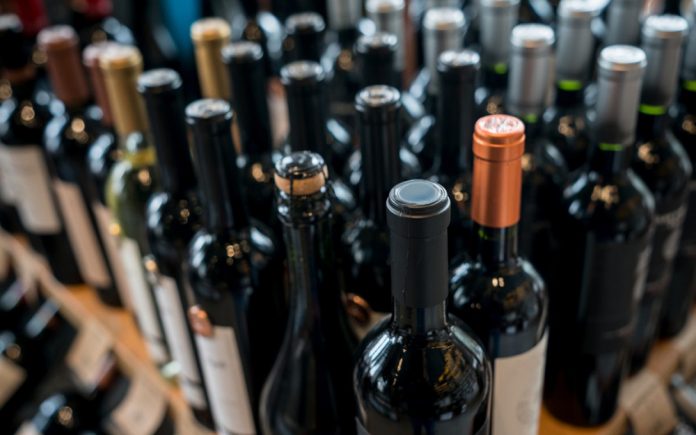
By Rick Riozza
For those who are seriously in the wine game, the Blue Chip sky appears limitless. All of the numbers have been crunched and with a bigger bounce back from last year’s craziness and set-backs, the forecast for the wine & beverage biz is pure growth.
Last year’s March lockdowns were extremely rough for restaurants, bars, and in-house sales. As the year progressed, consumers were moved to a panic-buying phase for wine, spiking wine sales growth above 60 percent. By the end of the year, total wine sales were about even with the prior year in view of all that was happening. Big big business is on the move here!
The wine market, at a minimum they say, is expected to grow annually by 8.51%. In global comparison, most money spent on wine is generated in the U.S., and the forecast is that around 55 billion dollars will be spent this year. That means, theoretically, each person in the country will spend at least $50 a year on the juice, and the average per capita consumption will reach 3.5 liters per year
I’m sure I personally enjoy close to 3.5 liters a week! Anyway—as I’m wont to do, I’ll just mention some wine news as I think of it:
The CV Weekly last year was one of the first to report Italy’s move to allow its most popular & precious Prosecco to go pink! Remember, that only the Italian white Glera grape was allowed by law to produce Prosecco. So, what does big business do when they have the complete market on a particular wine—and, they see the rosé market is bigger than ever. Well—you simply allow a little Pinot Noir into the mix, and now make a Prosecco Rosé . Are we talking double sales here!!
And of course, every big brand of Prosecco is now coming out pretty in pink. La Marca, owned by E & J Gallo is blending 89% Glera and 11% Pinot Noir; Zonin, which traditionally produced a brut-style Prosecco, will do their rosé with 85% Glera and more pinot—question, will it stay bruttish? Mionetto, owned by Freixenet, is 90% Glera/10% pinot; Riondo, imported by Terlato Wine Group, is doing the same 90/10 percent.
The famous Josh Cellars, in the Deutsch Family Wine & Spirits portfolio, currently California’s little darling wine of Millennials, actually imports Prosecco on their brand—and now you’ll see a rosé version; the same thing with Cupcake Vineyards, owned by The Wine Group, as the pink powers on.
Some of you wine enthusiasts know that Constellation Brands is a behemoth; it’s one of the biggest companies in—well, our constellation. They have finally concluded their deal with E&J Gallo, where they sold their lower-level wine brands to Gallo for around $810 million. There was also separate deal of $130 million of the Nobilo New Zealand Sauv Blanc to Gallo.
Constellation also sold their Paul Masson Grand Amber Brandy brand to Sazerac for $245 million. Sazerac Company, founded in 1850, is a privately held American alcoholic beverage company with its principal office in Louisville, Kentucky. It owns Buffalo Trace Distillery among over twenty major beverage brands.
We all smile when thinking about the Paul Masson brand of old. Remembering the rotund Orson Wells acting in a series of TV advertisements for Paul Masson California wine from 1978 to 1981, best known for their slogan “We will sell no wine before its time.” Unfortunately Wells lost his lucrative gig when he was caught on video saying he’d never drink any of that cheap stuff.
And again speaking of Constellation Brands, they bought The Prisoner Red Blend brand a little time ago and are now parleying it to a Napa Valley Cabernet Sauvignon ($55) and a Carneros Chardonnay ($40). The Prisoner brand is so popular with the fruit forward crowd and they think the same group will buy the new stuff as well. The Cab includes small amounts of Merlot, Syrah, Malbec, Petite Sirah, and Charbono, while the Chard has some Rousanne and Gewürztraminer in its blend.
Again—who knew, Constellation Brands is adding a Cabernet Sauvignon to its Meiomi line-up, sourced from Sonoma, Monterey, and Santa Barbara. As one would expect, the wines have aromas and flavors of blackberry, boysenberry, and bramble with a velvety mouthfeel.
Now on a smaller scale of things, but on-going wine history none-the-less, Bledsoe Wine Estates, founded by former NFL star Drew Bledsoe, owner of Doubleback and Bledsoe-McDaniels wineries, has acquired 40 more acres up in Walla Walla Washington, bringing its holdings to 194 total acres. As you readers know, we’ve been wooed by worthy Walla Walla wine!
Heitz Cellar’s new owner Gaylon Lawrence and CEO Carlton McCoy are not slowing down in their quest to acquire and preserve some of Napa’s most treasured wine estates. Three months after purchasing Burgess Cellars, the duo announced the acquisition of Stony Hill Vineyard in Napa’s Spring Mountain District. Stony Hill Chardonnay was king of the chards back in the day.
We covered Stella Rosa wines last Halloween. The line-up of fruity wines are all the rage for the young wine drinkers in town. Now Stella Rosa has launched a higher-alcohol expression of the brand. As opposed to the usual 5%, the new Stella Rosa
Royale carries an abv of 8%, making it a better wine for food pairings.
And finally—how about this: Napa-based CK Mondavi & Family is introducing temperature-sensitive labels on its white wines that inform consumers when the bottles are perfectly chilled to 55 degrees. Coinciding with the company’s 75th anniversary, the new labels are printed with thermochromic ink and a 75th anniversary seal. This business has always been in the hands of Peter Mondavi & Sons—not the Robert Mondavi family side of things. This CK brand retails for $7 and sells over 1.3 million cases a year! That’s big biz! Cheers!












































